Government Accountability Office full report on Air Force’s process, methodology choosing Space Command headquarters
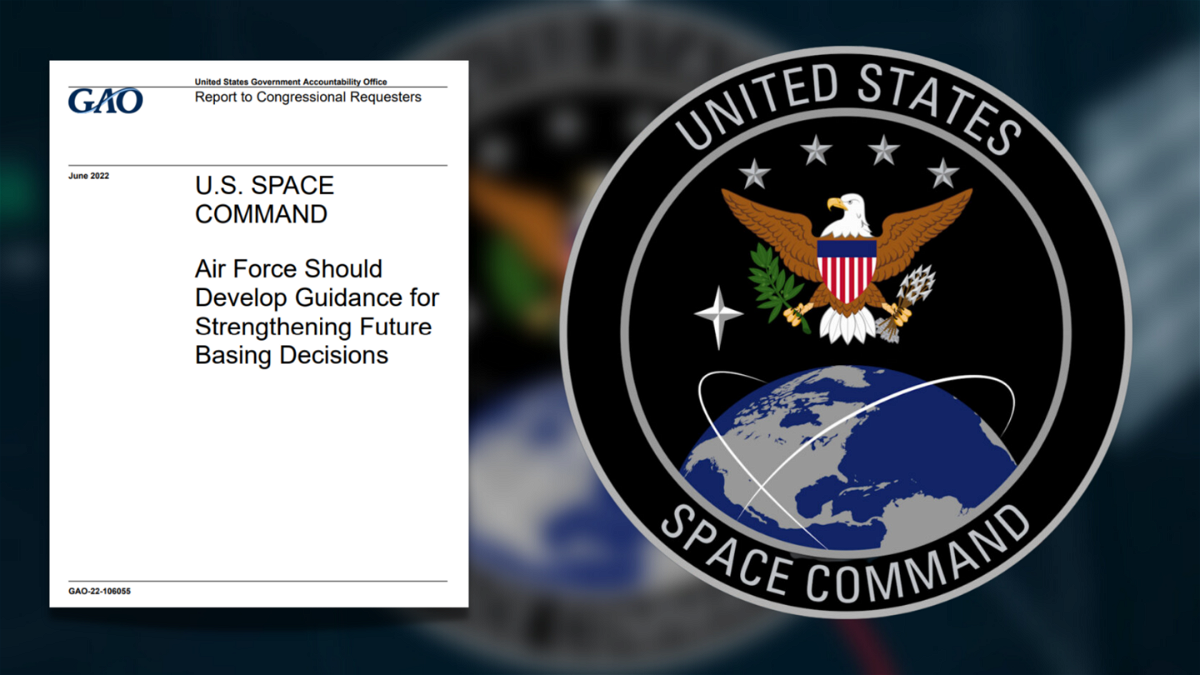
WASHINGTON, D.C. (KRDO) -- Thursday, The U.S. Government Accountability Office released its report examining the U.S. Air Force's process and methodology for choosing the location for the U.S. Space Command headquarters.
This is the second report regarding the decision. The first was released in early May by the Department of Defense Office of Inspector General. In that report, most of the details on the scoring and the final decision to choose Huntsville, Alabama over Colorado Springs, where it's currently located, were redacted.
According to officials, the GAO was asked to review the Air Force's process and methodology to select the headquarters for U.S. Space Command. The report examines:
- How the U.S. Space Command basing process compared with the established Air Force basing process and describes the steps the Air Force took to identify a headquarters location.
- Evaluates the extent to which the Air Force's revised selection process for determining the U.S. Space Command headquarters conformed to GAO best practices for analyzing alternatives.
In the GAO report, officials found between December 2018 and early March 2020, the Air Force "largely" followed its established strategic basing process to determine the preferred location for U.S. Space Command Headquarters.
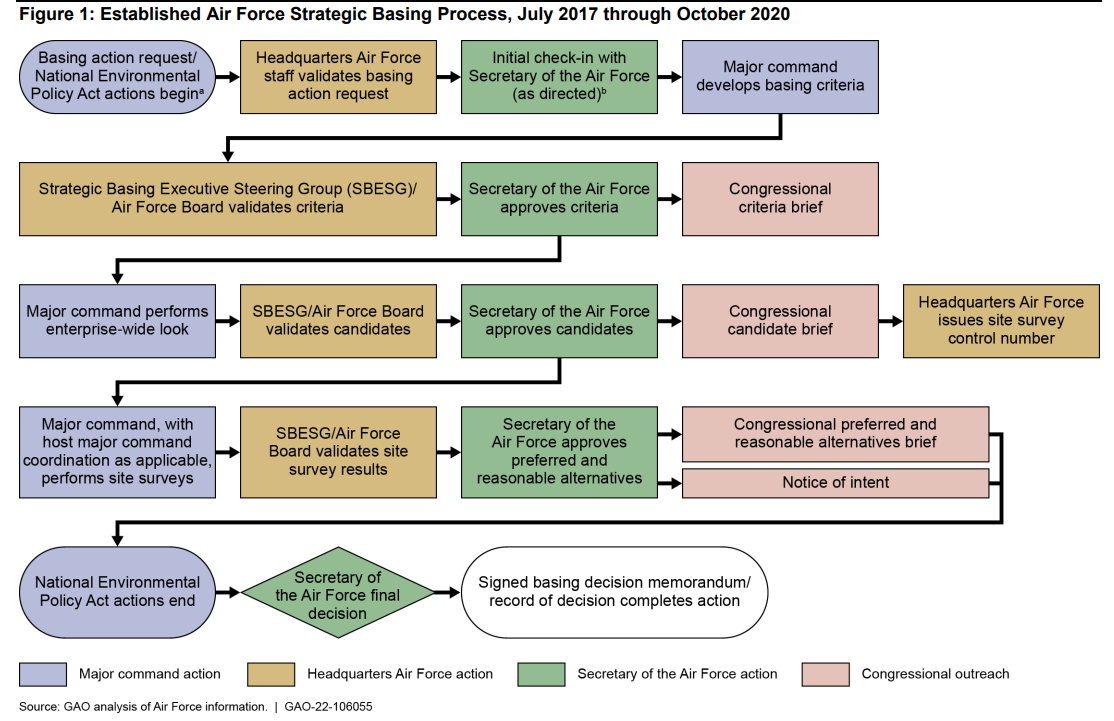
The six initial candidate locations were:
- Redstone Arsenal, Alabama
- Vandenberg Air Force Base, California
- Buckley Air Force Base, Colorado Cheyenne Mountain Air Force Station, Colorado;
- Peterson Air Force Base, Colorado
- Schriever Air Force Base, Colorado.
Below is a timeline showing key events between December 2019 and March 2020:
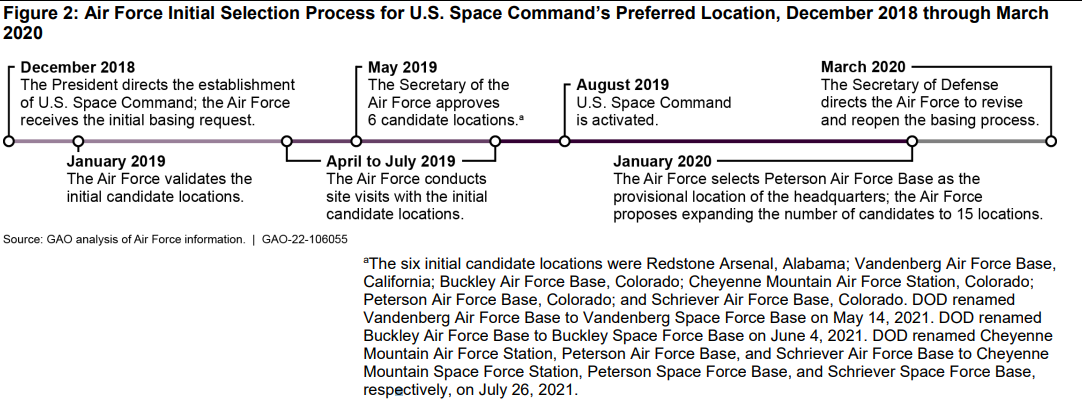
However, beginning in March 2020 and lasting through January 2021, the Air Force implemented a revised, three-phased process at the direction of the then Secretary of Defense which culminated in the selection of Redstone Arsenal in Huntsville over Colorado Springs.
According to the findings, the revised process followed some elements of the established basing process but included different steps.
The revised process included soliciting nominations from candidate communities (Nomination Phase), evaluating community submissions to determine the final candidate pool (Evaluation Phase), and selecting a preferred location among the six final candidate locations (Selection Phase).
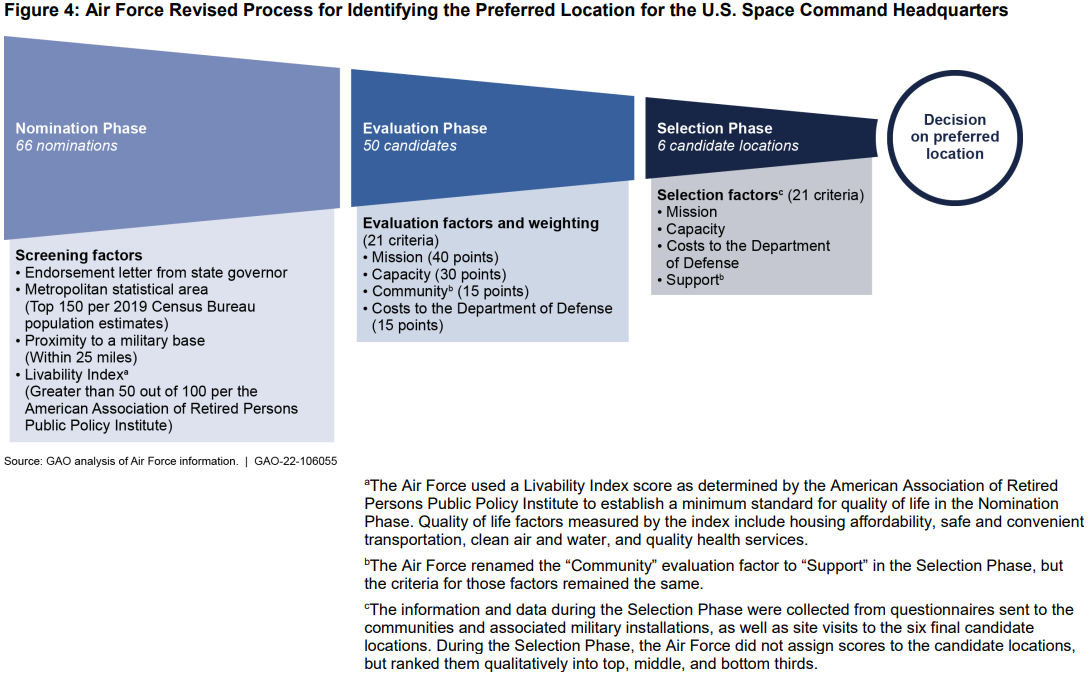
Below is a timeline showing key events between March 2020 and mid-January 2021 when the Air Force executed the revised process:

During the selection process, senior Air Force and DoD officials held a teleconference a day before meeting at the White House to discuss the basing decision. That meeting included the then-Secretary of the Air Force, the then Vice Chairman of the Joint Chiefs of Staff, the U.S. Space Command Combatant Commander, and the U.S. Space Force Chief of Space Operations.
The report states emails and draft documentation, including a draft decision matrix and draft nation memorandum that had been prepared for the Air Force Secretary's review, identified Peterson Air Force Base as the preferred location for the U.S. Space Command headquarters, with Redstone Arsenal as the lone reasonable alternative.
However, the report states the senior Air Force officials who attended the White House meeting told the GAO they entered the meeting prepared to discuss two options, Redstone Arsenal and Peterson Air Force Base. The then-Secretary of the Air Force said she wanted to ensure that "any decision would stand up to scrutiny and not be reversed" and viewed it as her mission to make a "fair decision that was not political or based on advocacy, but rather the analytical process and publicly announced criteria."
The report found while the Air Force documented the general rationale for the selection of Redstone Arsenal, there was no consensus among the officials interviewed for the report regarding who ultimately made the decision to choose Redstone Arsenal as the preferred headquarters location.
One former official stated that the then Acting Secretary of Defense made the decision, with agreement from the President and other senior officials. A second former official said that "more clarity on who had authority to make the decision would have been helpful" but said it seemed the authority remained with the Secretary of the Air Force and was not retracted by the President.
According to the report, the GAO was by Air Force Strategic Basing Office officials that the then Secretary of the Air Force retained the authority to make the decision on the preferred location and that she made that decision on January 12, 2021, as indicated in the action memorandum.
According to the GAO's report, the revised process was accessed against 21 "Analysis of Alternatives" (AOA) best practices. The GAO says the practices can "help increase transparency and avoid the presence or appearance of bias."
Those practices 21 were grouped into four characteristics of a high-quality analysis:
- Comprehensive
- Well-documented
- Unbiased
- Credible
In the report, officials found the revised process only fully or substantially met 7 of 21 AOA best practices assessed, saying "the Air Force's process did not substantially meet three of four characteristics - leading to significant shortfalls in its transparency and credibility."
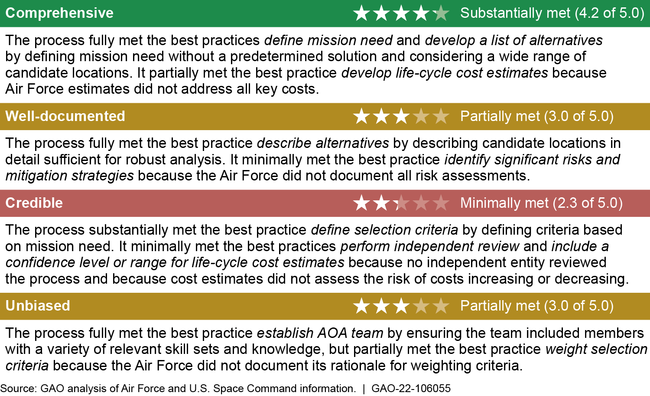
The findings say Air Force officials told GAO they didn't use the AOA best practices as a guide during the revised process because the practices were not required or relevant to base decisions. Officials also said that, for many reasons, they believe our AOA best practices should not be applied to the Air Force's revision selection process.
To read the full GAO report, click here.
A highlight of the findings can be read here.
However, in the report, the GAO states it believes the "best practices are relevant and, if effectively implemented, can help ensure basing decisions reflect a high-quality, reliable, process."
In the report, the Air Force stated it did comply with federal law and regulations that govern strategic basing decisions.
Through the report, the GAO concluded:
U.S. Space Command’s strategic significance underscores the importance of a transparent and deliberate headquarters basing decision. As the 11th unified combatant command, U.S. Space Command is
critically important to ensuring the nation’s ability to defend its vital interests and maintain its longstanding strategic advantage in space. In order to fulfill this purpose, U.S. Space Command requires a permanent headquarters capable of supporting its unique mission. In March 2020, the then Secretary of Defense directed the Air Force to broaden its initial approach to identifying a preferred location for U.S. Space Command’s permanent headquarters, with the aim of being more transparent and inclusive of potential candidates. The resulting process followed selected elements of the Air Force’s established basing process—such as developing and weighting evaluation criteria—while also differing in key respects, such as by soliciting location nominations from all 50 states instead of beginning with a set of candidates based on their ability to meet defined functional requirementsWhile the January 2021 selection of Redstone Arsenal as the preferred location for U.S. Space Command headquarters was consistent with the Air Force’s analysis, our assessment of the Air Force’s revised selection process and attendant analysis against our AOA best practices identified significant shortfalls in its transparency and credibility. By developing guidance for future strategic basing decisions that is consistent with our AOA best practices, and determining the basing actions to which it should apply, the Air Force would be better positioned to substantiate similar basing decisions with key stakeholders. Such decisions could include those that exceed a certain monetary threshold or hold strategic significance to DOD. Moreover, doing so could help prevent bias, or the appearance of bias, from undermining the perceived credibility of future, high-profile strategic basing decisions and better inform Congressional oversight.
United States Government Accountability Office
The GAO recommends the following for executive action:
The Secretary of the Air Force should ensure the Assistant Secretary of the Air Force for Energy, Installations, and Environment develops guidance for future strategic basing decisions that is consistent with GAO’s Analysis of Alternatives (AOA) best practices, and determines the basing actions to which it should apply.
United States Government Accountability Office
The GAO did state that the report did not assess the Air Force's process for identifying the preferred location for U.S. Space Command's headquarters against laws and regulations. Rather, the report compared the basic process and assessed the revised process against the best practices in the AOA framework.
